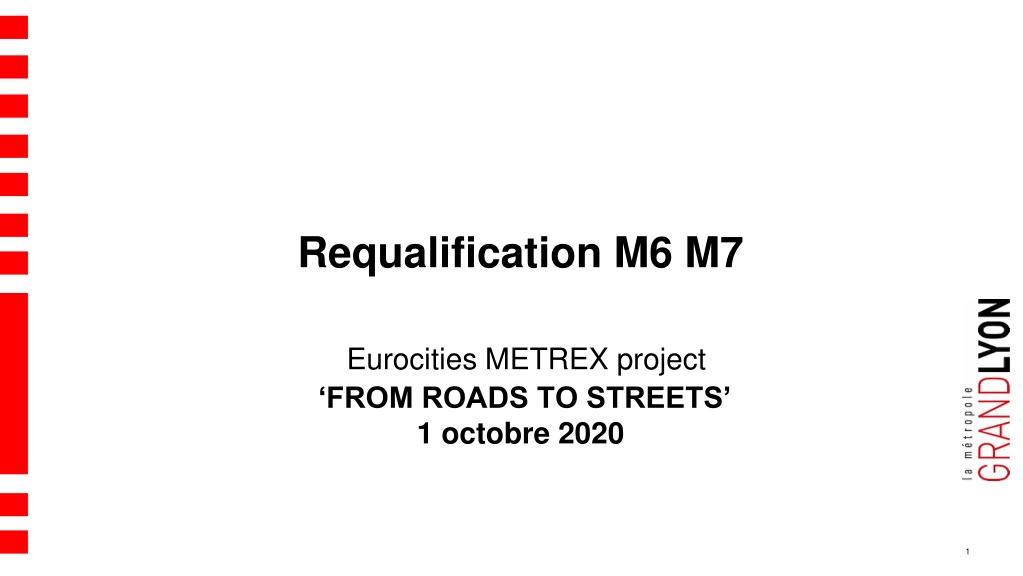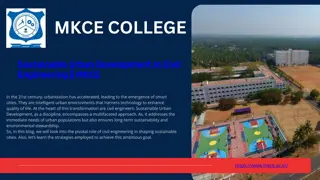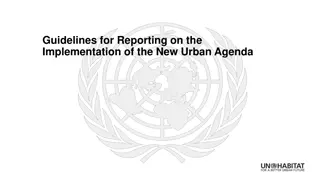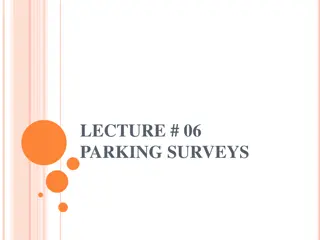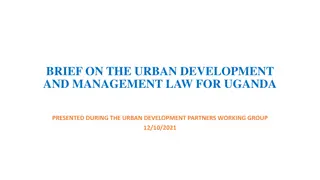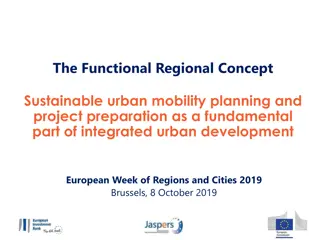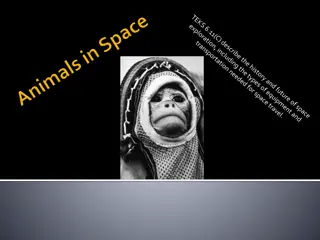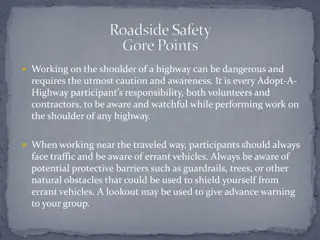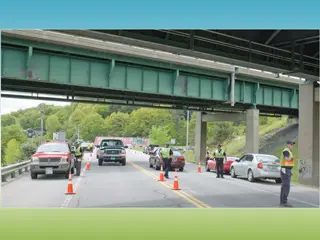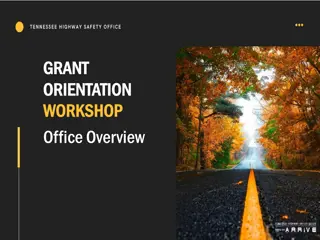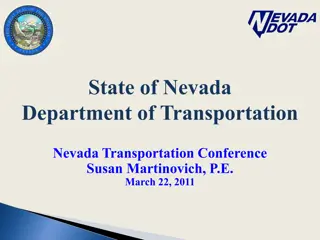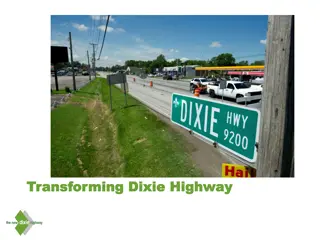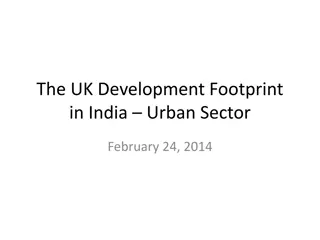Transformation of A6-A7 Highway into Sustainable Urban Space
The project "From Roads to Streets" aims to transform the A6-A7 motorway into a sustainable urban space, reducing noise, pollution, and congestion. By promoting alternative modes of transportation and creating new pedestrian bridges, the project envisions a more livable environment along the Rhône River. The evolution of the project includes strategic spatial masterplans and a shift towards public transport, carpooling, and cycling by 2030.
- Urban transformation
- Sustainable mobility
- Traffic reduction
- Public transport
- Environmental sustainability
Download Presentation

Please find below an Image/Link to download the presentation.
The content on the website is provided AS IS for your information and personal use only. It may not be sold, licensed, or shared on other websites without obtaining consent from the author. Download presentation by click this link. If you encounter any issues during the download, it is possible that the publisher has removed the file from their server.
E N D
Presentation Transcript
Requalification M6 M7 Eurocities METREX project FROM ROADS TO STREETS 1 octobre 2020 1
Requalification M6 M7 Background Why transform the A6-A7 ? Every day, 115,000 vehicles pass by the A6-A7 motorway between Limonest and Pierre-B nite. This infrastructure is commonly considered as noisy, source of pollution and dayly saturated ... This project aims to reduce the number of cars and to develop other modes of transport: public transport, carpooling, bikes, to create a new promenade near Rh ne River and new bridges/footbridges to cross the river 3
Requalification M6 M7 Background Why transform the A6-A7 ? Every day, 115,000 vehicles pass by the A6-A7 motorway between Limonest and Pierre-B nite. This infrastructure is commonly considered as noisy, source of pollution and dayly saturated ... This project aims to reduce the number of cars and to develop other modes of transport: public transport, carpooling, bikes ... carpooling, bikes, to create a new promenade near Rh ne River and new bridges/footbridges to cross the river Why transform the A6-A7 ? Every day, 115,000 vehicles pass by the A6-A7 motorway between Limonest and Pierre-B nite. This infrastructure is commonly considered as noisy, source of pollution and dayly saturated ... This project aims to reduce the number of cars and to develop other modes of transport: public transport, 4
Evolution of the project 2010 : Strategic spatial masterplan : new highway for transit, ring completed and, after that, requalification of A6 A7 ( Anneau des Sciences ) in 2030 5
Evolution of the project 2010 : Strategic spatial masterplan : new highway for transit, ring completed and, after that, requalification of A6 A7 ( Anneau des Sciences ) in 2030 2016 : transfer from State to M tropole (A6 A7 becomes M6M7). A new strategy with 3 steps: 2020 : Adjustments will be made in 2020 to change travel habits and encourage the use of public transport, carpooling or cycling 2025 : transit traffic out of the agglomeration 2030 : Anneau des Sciences 6
Evolution of the Project 2010 : Strategic spatial masterplan : new highway for transit, ring completed and, after that, requalification of A6 A7 ( Anneau des Sciences ) 2016 : transfer from State to M tropole (A6 A7 becomes M6M7). A new strategy with 3 steps: 2020 : Adjustments will be made in 2020 to change travel habits and encourage the use of public transport, carpooling or cycling 2025 : transit traffic out of the agglomeration 2030 : Anneau des Sciences - ADS 2020 : Election - ADS abandonned 2020 - First step : idem Requalification of M6 M7 without any new infrastructure ? 7
Requalification M6 M7 phase 1 : horizon 2020 A two phases project Phase 1 : Highway transformation 2020 april 2018 public consultation on the project launch of preliminary studies june 2018 execution of work 2019 to 2020 commissioning of the redeveloped urban boulevard early 2020 launch of the carpooling experiment End of 2020 Initiate urban regeneration Develop public transport et active mobility Develop carpooling by experimenting with a new offer Ease the traffic 8
Requalification M6 M7 phase 1 : horizon 2020 Construction program One project five operations > 4 operations on or in the immediate vicinity of the decommissioned strech of the axis : Operation "Ribbon A6 / A7" (P + R, bus lanes, carpool lane, high school bus stops, input signals) Staking operation Operation "La Mulati reOullins Pierre-B nite cycle path" Operation Quai Perrache > 1 operation on the decommissioned axis and upstream / downstream : Carpool experiment 9
Requalification M6 M7 - 2020 Road design the traffic speed will be lowered to 70 km/h, the width of the tracks will be reduced, The left lane will be dedicated to carpooling and express bus traffic Vegetation indicate the entrance to the end of the highway the traffic speed has been lowered to 70 km/h the width of the tracks has been reduced, 10 The distribution of lanes will change on the north side: on the left, a dedicated lane for carpooling, the right one will be reserved for buses
Requalification M6 M7 - 2020 Carpooling experiment In September 2020 a dedicated lane will be activated during rush hours between La Garde Valverts on M6 and Pierre-B nite Confluence on M7 It will be open to user categories defined in the LOM (2+, Crit Air 0, Taxis, PT) First educational controls during commissioning and then a computer-assisted video verbalization will be implemented 11
Requalification M6 M7 - 2020 Road design In the city core, on the Perrache quay, the sidewalk will be widened and a cycle path will be created and extended to the south towards Pierre-Benite. 12
Requalification M6 M7 phase 2 urban boulevard Studies have to find ways to make the traffic decrease from 120,000 to 80,000 or 50,000 veh/day, without new infrastructure EXISTING Topics that have to be further studied Local / regional acceptance of the project considering its differents scale : impact on districts (especially west) of the Metropole de Lyon but also its neighbours Modeling VS traffic evaporation : how other cities are dealing or not with their traffic model ? Have they experienced traffic evaporation afterward implementation ? How to evaluate it ? 13
Requalification M6 M7 urban boulevard PROJECTED FOR 2030 EXISTING 14
Annex 15
Presentation of Lyon Metropolitan area Lyon Metropolitan Area Metropole de Lyon 80 k m40 k m20 k m 1,3 million inhabitants ; 59 municipalities 9 200 salaried staff Budget : 3,5 Billion in 2017 650 000 jobs 145 000 students 25 980 ha , or 48% green and agricultural spaces and water 3,3 million inhabitants ; more than 1.000 municipalities 60 intermunicipal authorities included the 2 main fonctionnal areas : Lyon 2,2M & St Etienne. 0,5 M hab 6 cities more than 50 000 inhabitants 1,4 million jobs / 150.000 students 90% of green and agricultural spaces 13 transportation authorities (excluding motorway companies and airport companies) The european functionnal urbain area Metropole de Lyon 16
Planning context Regional Scale : Regional spatial plan (SRADDET/ R gion AURA) : https://www.civocracy.org/ambitionterritoires2030/sraddet-projet-definitif/ Metropolitan scale : National State orientations : Directive territoriale d am nagement (DTA/Dreal) : http://www.auvergne-rhone-alpes.developpement- durable.gouv.fr/dta-de-l-aire-metropolitaine-lyonnaise-a10970.html Strategic spatial masterplan : Sch ma de coh rence territorial (Scot/Sepal): https://www.scot-agglolyon.fr/les-documents-du-scot/ Zero carbon strategy : Plan climat air nergie (PCAET/M tropole de Lyon) https://blogs.grandlyon.com/plan-climat/wp- content/blogs.dir/8/files/dlm_uploads/2019/12/01- PCAET_MetropoleDeLyon_2019-20301.pdf Sustainable urban mobility plan : Plan de d placement urbain (PDU/Sytral) : http://www.sytral.fr/306-presentation_pdu.htm 17
